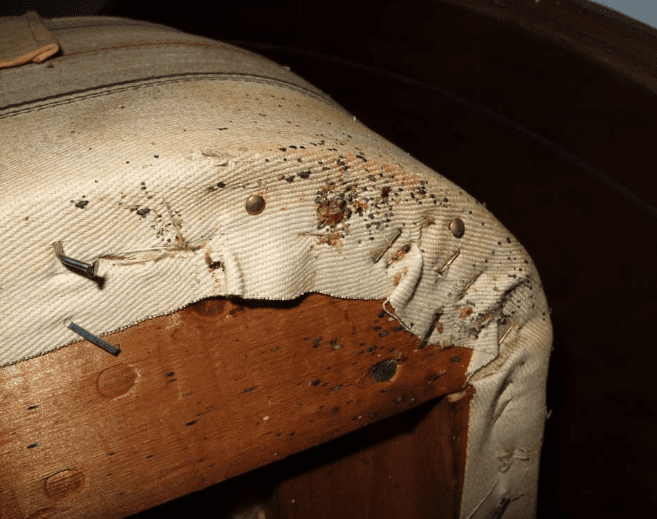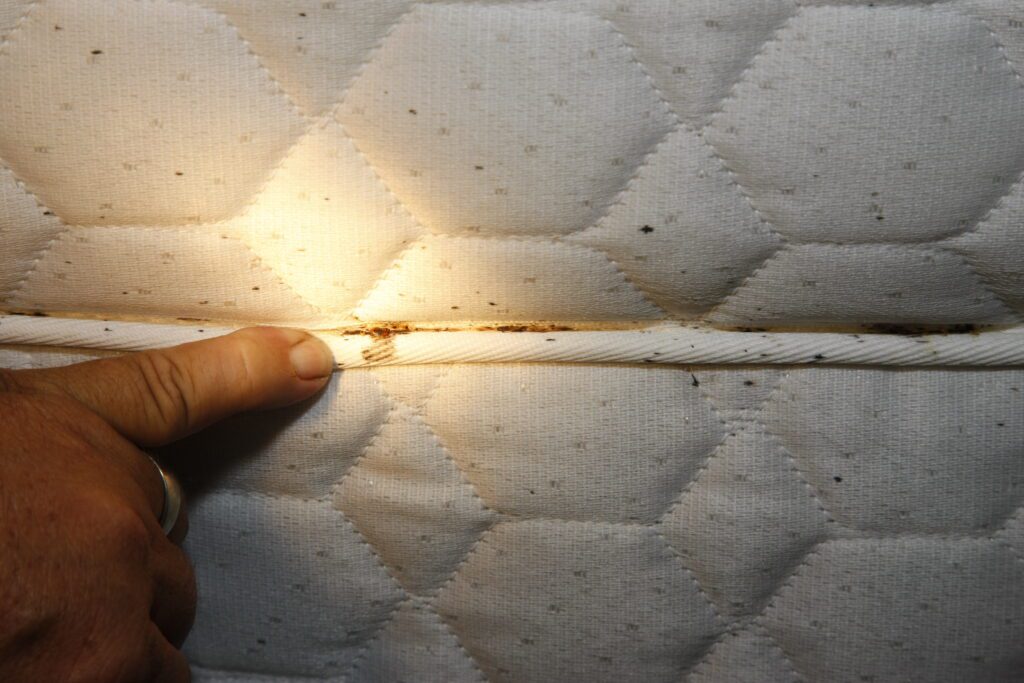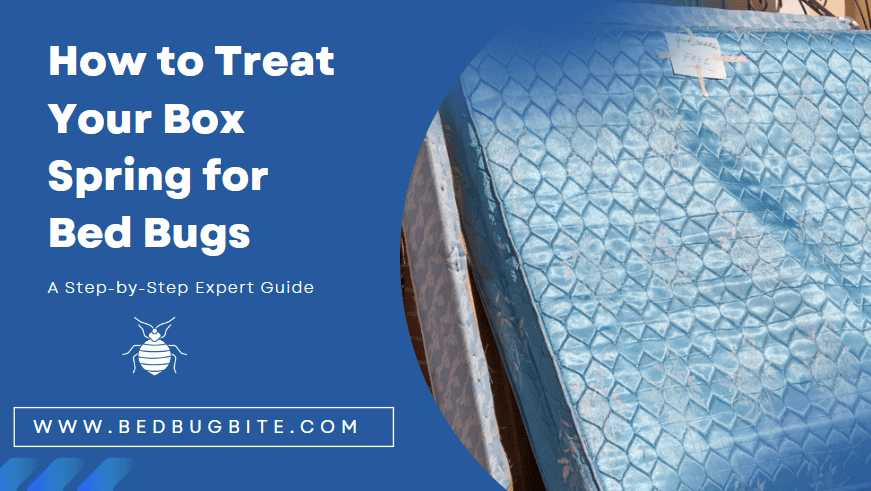Introduction
Welcome to your ultimate guide on how to treat your box spring for bed bugs—a topic often overlooked but critical in the fight against these notorious pests. We all know that bed bugs love hiding in places that offer them easy access to their food source—us! And your box spring provides just the sanctuary these elusive creatures need. Missing out on treating this area could be a crucial mistake, leading to persistent infestations and sleepless nights. That’s why we’ve crafted this comprehensive, step-by-step guide to arm you with the knowledge and tactics you need to reclaim your bed and, by extension, your peace of mind.
Recent studies from reputable entomological sources, such as the Journal of Economic Entomology, have highlighted how bed bugs can survive for extended periods by hiding in places that are not immediately visible or accessible, underscoring the importance of treating areas like box springs. We’ve sifted through the data and incorporated it here to ensure you have the most accurate, up-to-date advice.
So, whether you’ve already identified a bed bug infestation or are taking preventive measures, this guide will be your go-to resource. We’ll delve into recognizing the telltale signs of an infestation, discuss the essential tools and materials you’ll need, and walk you through the treatment process, both chemical and non-chemical, to effectively eradicate bed bugs from your box spring. We’ve got a lot to cover, so let’s dive right in.
Stay tuned as we break down each aspect of the treatment process, equipping you with the know-how to get rid of bed bugs once and for all.
Recognize the Signs of Bed Bug Infestation
Before diving into the treatment process, it’s pivotal to first establish whether or not you’re actually dealing with a bed bug infestation. Misidentifying the enemy can lead to wasted time, effort, and resources. Here’s what to watch for:
Physical Evidence

Look for dark fecal spots on your mattress, bed frame, and of course, your box spring. These are often a telltale sign of bed bug activity. These pests also shed their skin and lay tiny, yellowish-white eggs, often found in the seams and crevices of your bedding. These elements serve as significant red flags that you’re not alone in your bed.
Live Bugs
Bed bugs are nocturnal, making them harder to spot during the day. Focus your inspection on the corners and seams of your box spring, as these are their favorite hiding spots. Adult bed bugs are about the size and color of an apple seed, while the nymphs are smaller and more translucent.
Bites and Symptoms
Perhaps the most disconcerting sign of a bed bug infestation is the presence of bites on your skin. These bites can resemble those from other insects, like mosquitoes, but they often appear in a line or cluster and can cause a burning sensation. It’s essential to note that not everyone reacts to bed bug bites, so the absence of bites doesn’t necessarily rule out an infestation.
To make your detection efforts more precise, research from Rutgers University suggests using passive bed bug monitors. These devices trap bed bugs, making it easier to detect their presence and assess the severity of the infestation. We’ve incorporated this research-based recommendation to guide you in your quest to confirm whether bed bugs have indeed taken up residence in your box spring.
With this foundational knowledge, you’ll be better prepared to tackle the treatment process effectively. Keep reading as we guide you through assembling the right tools and materials for the job.
Tools and Materials Needed
Embarking on the quest to rid your box spring of bed bugs requires more than just determination; you’ll need the right tools and materials. Not all treatments are created equal, and using inappropriate or ineffective options could exacerbate the problem. Below, we lay out the essentials you’ll need for chemical and non-chemical treatments, as well as the safety gear to protect yourself during the application.
Chemical Treatments
The market is replete with various types of insecticides designed to eliminate bed bugs. For treating your box spring, liquid insecticides are often the go-to choice. However, it’s crucial to select EPA-approved products that are explicitly labeled for bed bug extermination. This ensures both efficacy and safety. Aerosol insecticides are another option, particularly useful for hard-to-reach areas. However, they might not be as long-lasting as their liquid counterparts.
Non-Chemical Options
Chemicals are effective, but they aren’t the only line of defense. A high-quality steamer can penetrate the fabric and structure of your box spring, killing bed bugs and their eggs on contact. Make sure to opt for a steamer with a minimum heat output of 130°F, as lower temperatures will not be effective. Another non-chemical option is a vacuum cleaner with a HEPA filter, essential for removing bed bugs, their eggs, and other debris from your box spring.
Safety Gear
Irrespective of the treatment method you choose, your safety is paramount. Always wear gloves made of nitrile or latex to protect your skin. A mask can safeguard against inhaling fumes or dust, and protective clothing should be worn to minimize skin exposure to chemicals.
Drawing upon data from the Centers for Disease Control and Prevention (CDC), it’s vital to use only the recommended amount of any chemical treatment and to follow the manufacturer’s instructions carefully. Misuse of chemicals can lead to health issues, which underscores the importance of using safety gear.
Armed with the right tools and materials, you’ll be better prepared to tackle the infestation head-on. Continue reading as we dive into the pre-treatment preparations for your box spring, a crucial step often overlooked.
Pre-treatment Steps: Preparing Your Box Spring
Before you unleash any form of treatment on your box spring, thorough preparation is essential. Skipping this phase can significantly reduce the efficacy of the subsequent treatment methods you employ. Proper preparation involves cleaning, disassembly, and a meticulous inspection. Let’s delve into each aspect to give you a complete understanding of what needs to be done.
Cleaning
Start by vacuuming the entire surface of your box spring, paying close attention to the seams, corners, and any cracks or crevices. A vacuum cleaner equipped with a HEPA filter is ideal for this task as it captures even the smallest particles, including bed bug eggs. Vacuuming not only removes live bed bugs but also sucks up fecal matter, shed skins, and potential allergens.
Disassembly
If your box spring has any removable fabric or plastic covers, now is the time to take them off. Keep these separate and launder them on the highest heat setting suitable for the material. This heat treatment kills any bed bugs and eggs hiding within. Don’t forget to check and remove any staples or nails that might interfere with the treatment process.
Inspection
Once the box spring is clean and disassembled, it’s crucial to inspect the area to identify the severity and locations of the infestation. Use a flashlight and a magnifying glass if necessary, focusing on seams, corners, and any areas where the material is folded or stitched. The goal is to find any remaining hotspots that require targeted treatment.

Citing advice from Harvard Health Publishing, it’s essential to be methodical and systematic in your approach to avoid missing any areas. This will significantly increase the chances of successfully eliminating the bed bugs during the actual treatment phase.
Now that you’ve prepared the battleground, you’re ready to move on to the actual treatment options—both chemical and non-chemical—that will help you eradicate bed bugs from your box spring. Keep reading as we guide you through these methods in the following sections.
Chemical Treatment: Eradicating Bed Bugs Effectively
Having prepared your box spring meticulously, it’s now time to tackle the actual treatment process. Chemical treatments, when done correctly, can provide a highly effective means of killing bed bugs and their eggs. However, you must adhere strictly to safety measures and guidelines. Let’s explore the recommended steps for chemical treatments to ensure you’re getting the job done right.
Choosing the Right Chemical
Not all insecticides are created equal. Opt for products that are EPA-approved for bed bug treatment, ensuring they are both safe and effective. These typically contain active ingredients like pyrethroids or neonicotinoids. Always read the label carefully for proper application and safety guidelines.
Application Process
Begin by applying the liquid insecticide along the seams, edges, and inner structures of the box spring. A spray bottle with a nozzle helps in targeting specific areas effectively. For crevices and hard-to-reach spots, aerosol insecticides can be beneficial. It’s crucial to allow adequate drying time, as specified by the product instructions.
Reapplication
Chemical treatments often require reapplication to deal with any bed bugs that may have survived the initial treatment or newly hatched eggs. The frequency of reapplication depends on the specific insecticide. Some may recommend a second application after two weeks, while others might suggest a more prolonged interval.
Monitoring Success
After treatment and reapplication, use bed bug monitors to gauge the effectiveness of the chemical treatment. These can capture lingering bugs, offering insights into whether another round of treatment is required.
Adherence to safety protocols cannot be overstated. As affirmed by the U.S. Environmental Protection Agency (EPA), failure to follow instructions can lead to ineffective treatment and may even pose health risks.
By following these guidelines and recommendations, you maximize the likelihood of fully eradicating bed bugs from your box spring. Giving you back the peace of mind you deserve. Up next, we’ll explore non-chemical alternatives for those looking for different approaches to this persistent problem.
Non-Chemical Alternatives: Nature-Based Solutions for Bed Bug Elimination
Though chemical treatments are widely used and effective. There are also non-chemical alternatives that can be just as potent in eradicating bed bugs from your box spring. These methods are especially useful for households with children, pets, or individuals with chemical sensitivities. Let’s break down these options to provide a holistic view of what’s available to you.
Steam Treatment
One of the most effective non-chemical treatments is the use of steam. A quality steamer can deliver a heat treatment that penetrates deep into the box spring. Killing bed bugs and their eggs upon contact. Ensure the steamer reaches a minimum temperature of 130°F and that you move it slowly across the surface to ensure adequate exposure.
Freezing Technique
While heat is a reliable option, extreme cold can be equally effective. Portable freezing units designed for bed bug elimination can be employed to treat your box spring. The temperature should plummet to at least 0°F for a minimum of four hours to guarantee the death of bed bugs and their eggs.
Diatomaceous Earth
This natural, silica-based material can be applied to your box spring. Acting as a desiccant that dehydrates the bed bugs, eventually causing their demise. The application process is straightforward, but it’s crucial to use food-grade diatomaceous earth and to apply it carefully to avoid inhalation.
Encasements
Bed bug-proof encasements can trap existing bed bugs inside and prevent new ones from invading. These encasements should be hypoallergenic, breathable, and most importantly, certified for bed bug protection.
Supported by a study from the Journal of Economic Entomology, non-chemical treatments can offer a level of control comparable to chemical methods, particularly when they are part of an integrated pest management approach.
Armed with this knowledge, you have a set of powerful, nature-friendly tools at your disposal to rid your box spring of bed bugs. In the next section, we’ll guide you through the post-treatment care to ensure long-term success in keeping these pests at bay.
Post-Treatment Care: Ensuring Long-Term Success
Once you’ve executed your chosen treatment plan—whether chemical or non-chemical—the work doesn’t end there. Effective post-treatment care is essential for ensuring that bed bugs do not make a dreaded comeback. This involves consistent monitoring, upkeep, and possibly some lifestyle changes. Below, we elaborate on these critical steps to help you maintain a bed bug-free environment.
Monitoring and Inspection
After treatment, ongoing vigilance is required. Use bed bug traps or monitors at various strategic points around your box spring and room to detect any residual activity. Regularly inspect the box spring, especially the seams, corners, and other potential hiding spots, to ascertain that no new infestations have occurred.
Regular Cleaning
Consistent cleaning can go a long way in preventing a reinfestation. Make it a habit to vacuum your box spring and the surrounding area weekly. Always use a vacuum cleaner equipped with a HEPA filter to capture even the tiniest particles.
Protective Measures
To further safeguard your box spring, consider using bed bug-proof encasements permanently. These can serve as an ongoing protective layer, making it difficult for bed bugs to infiltrate or escape, thus interrupting their life cycle.
Lifestyle Changes
Sometimes, lifestyle changes like reducing clutter around the sleeping area can minimize potential hiding spots for bed bugs. Being vigilant when traveling, including inspecting hotel room beds and luggage, can also prevent new infestations from taking root.
According to the National Pest Management Association, ongoing maintenance and periodic professional inspections are crucial for keeping bed bugs at bay in the long term.
By adopting these post-treatment measures, you not only ensure the effectiveness of your initial treatment but also make your living space less hospitable to future infestations. Coming up, we summarize key takeaways to keep your box spring and bedroom bed bug-free for good.
Conclusion: Key Takeaways for a Bed Bug-Free Box Spring
Congratulations, you’ve now equipped yourself with a comprehensive understanding of treating your box spring for bed bugs. The journey from identifying an infestation to implementing a thorough treatment plan—whether chemical or non-chemical—culminates in diligent post-treatment care. Your battle against bed bugs is most effective when you employ a holistic approach, combining preparation, treatment, and ongoing maintenance to ensure long-term success.
Summary of Steps
To recap, the crucial phases involve pre-treatment preparation, choosing the appropriate treatment method, and adopting post-treatment best practices. By adhering to these steps meticulously, you set the stage for effective bed bug eradication.




